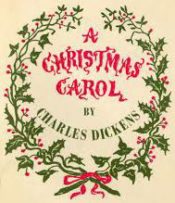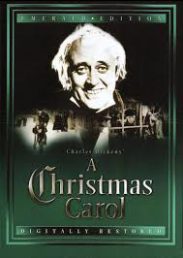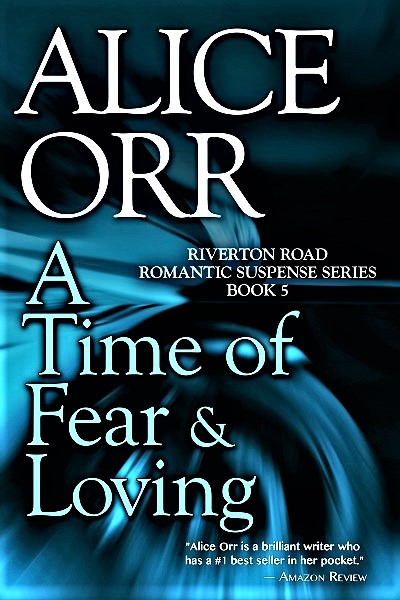 Scrooged Stories are the writer’s ideal holiday gift, because they come with Scrooged storytelling and the Bountiful Writing that can result from opening this particular package all the way into your creative heart.
Scrooged Stories are the writer’s ideal holiday gift, because they come with Scrooged storytelling and the Bountiful Writing that can result from opening this particular package all the way into your creative heart.
The result for Charles Dickens was his fabulous and fabled A Christmas Carol which has turned out to be one of the best known and most popular stories in the English language.
You can wrap some of that and gift it to me anytime, and I don’t believe I know a single writer, or reader either, who wouldn’t feel the same. Scrooged Stories are pay dirt and pop chart dirt too. So, what can Charles and Ebenezer teach us about how to get a dusting of that magic on our own storytelling shoes?
I imagine most of us are familiar with the narrative theme, “How the Mighty Have Fallen.” Some of us, including me, have even written those stories. A Christmas Carol, the ultimate among Scrooged Stories, moves beyond the downfall scenario to “How the Mighty Have Fallen Then Been Dragged Back Up Again.” In other words, Scrooged Stories are about Redemption. The best Scrooged Stories are about Dramatic Redemption. Dramatic, because of the depth of the depravity pit into which the central character has plunged himself, usually before we encounter him. Scrooged Stories are, after all, mainly about the Scrooge.
 Our prototype, Ebenezer’s personal human depravity has to do with compassion. He doesn’t have any, not any we can readily discern from his perpetually scowling face and stingy, heartless behavior. Worse still, he is pleased to be exactly what he is and regards the caring world as, in a word, a humbug. Redeeming this dude won’t be easy. But then, that’s what makes Scrooged Stories so reader appealing. The more irredeemable the character is, the more dramatic the story will be. And drama, along with power and intensity, is the wellspring of that pop chart pay dirt I mentioned.
Our prototype, Ebenezer’s personal human depravity has to do with compassion. He doesn’t have any, not any we can readily discern from his perpetually scowling face and stingy, heartless behavior. Worse still, he is pleased to be exactly what he is and regards the caring world as, in a word, a humbug. Redeeming this dude won’t be easy. But then, that’s what makes Scrooged Stories so reader appealing. The more irredeemable the character is, the more dramatic the story will be. And drama, along with power and intensity, is the wellspring of that pop chart pay dirt I mentioned.
Thus, Ebenezer is the poster boy for those of us who would like to produce Scrooged Stories of our own. He is a deep-down mean, unrepentant character who disdains charity and scoffs at charitable folk, betrays his beloved sister’s wishes by disowning her only son, and all but freezes poor Bob Cratchett out of his threadbare office. Such an extreme character portrayal demands an extreme plot, and well-crafted Scrooged Stories do not disappoint.
Dickens thickens his extreme plot with a ghost. Not a happy, harmless Casper, but a chain-clanking, shrieking, ominous and terrifying horror named Marley, who is dead set (pun intended) upon rattling Ebenezer out of his complacency , into awareness of the doom he inevitable faces, if he doesn’t change his ways.
Thus, the quintessential exemplar of Scrooge Stories presents us, and Ebenezer, with his story goal. He must change. Which is also his story problem, or internal conflict, if you prefer. He does not want to change. He is absolutely committed to his bad old self. Dickens will have to dredge up some mega-dramatic means to so much as capture Ebenezer’s attention, much less motivate him toward metamorphosis.
At which point, my particular favorite of Scrooged Stories gives us more ghosts because, besides being a Redemption Story, A Christmas Carol is a ghost story too. Our heartless (supposedly) hero (sort of) is forced to experience and, even more soul-quaking, to witness what these phantasms have to show him about himself. His past retreat from human feeling. His present cold, solitary, disconnected state and how it affects others. The dark, dire future consequences that await him if he fails to change.
Meanwhile, this Father Christmas of Scrooged Stories, rackets us, and its host of readers, relentlessly forward through Ebenezer’s tumultuous adventures at whirlwind pace, all the way to the most foreboding possibility possible. The grave. We are set up big time for the payoff and the pay dirt. The Redemption of Ebenezer Scrooge.
 Once again, Scrooged Stories don’t let us down. We are showered with a bounty of glorious gifts, the most bounteous of which may be the key insight into what make this story as popular as it is. The dramatic contrast of its final act from its initial one. Joy, giddiness, laughter so unrepressed we might think it would break Ebenezer’s stony face. And it does. Which brings us to the most satisfying payoff of all. Magnanimous deeds. Ebenezer scatters goodness, light, and even life in every direction.
Once again, Scrooged Stories don’t let us down. We are showered with a bounty of glorious gifts, the most bounteous of which may be the key insight into what make this story as popular as it is. The dramatic contrast of its final act from its initial one. Joy, giddiness, laughter so unrepressed we might think it would break Ebenezer’s stony face. And it does. Which brings us to the most satisfying payoff of all. Magnanimous deeds. Ebenezer scatters goodness, light, and even life in every direction.
Because Scrooged Stories are, at their essence and at their endings, all about satisfaction. A wild, careening ride from the depth of depraved darkness to the light of salvation. The satisfaction of the main character’s life versus death problem. Satisfaction of his hard-won goal. Satisfaction of the author’s goal as well, in the form of many satisfied readers.
Scrooged Stories are the gift Charles Dickens gives us, at the holidays and throughout the year. Each story element brightly wrapped and ready to be transformed by way of your unique imagination into your own Tale of Redemption. Your own addition to the ever-popular pantheon of Scrooged Stories. To which I say, “God Bless Us Every One.”
Alice Orr – https://www.aliceorrbooks.com.
– R|R –
 Alice’s new novel, including a Scrooge of her own, is A Time of Fear & Loving – Riverton Road Romantic Suspense Book 5. Available HERE. You can find all of Alice’s books HERE.
Alice’s new novel, including a Scrooge of her own, is A Time of Fear & Loving – Riverton Road Romantic Suspense Book 5. Available HERE. You can find all of Alice’s books HERE.
What readers are saying about A Time of Fear & Loving. “Alice Orr is the queen of ramped-up stakes and page-turning suspense.”
“Warning. Don’t read before bed. You won’t want to sleep.”
“The tension in this novel was through the roof.”
“A budding romance that sizzles in the background until it ignites with passion.”
“I never want an Alice Orr book to end.”
“The best one yet, Alice!”
http://facebook.com/aliceorrwriter/
http://twitter.com/AliceOrrBooks/
http://goodreads.com/aliceorr/
http://pinterest.com/aliceorrwriter/
TAGS – Character Development, Plotting, Dramatic Storytelling